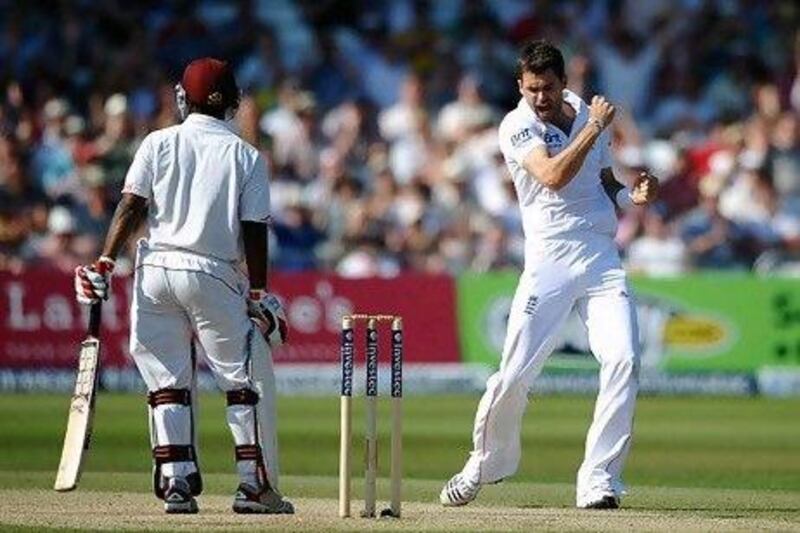On the surface, rotation certainly hasn't hurt England's bowling potency in the final Test against West Indies.
James Anderson and Stuart Broad may have been rested, but Graham Onions and Steven Finn, who took their places, combined for seven wickets in tidy spells, though they will have been disappointed to allow Tino Best to make the highest score by a No 11.
The broader issue is rotation itself, and the necessity for it in a home season when England play only six Tests before heading to India in November. Anderson's feelings on the policy were evident when quizzed about it even before he was rested for Edgbaston.
"It would be extremely disappointing for me to miss out," he said. "It would be different if I felt fatigued or was struggling with an injury. But I believe I am fit to play — and while I am fit to play I want to play in every England game I can."
It is not hard to understand where Anderson's coming from. After making his debut in 2003, it took him the best part of a decade to come into his own, to develop the confidence that has been such a big part of his progression from potential star to leader of the pack.
In 2010, his breakthrough year, when England dominated an Ashes series in Australia, Anderson took 57 wickets at 22.96 from 12 Tests.
A year later, as England displaced India at No 1 in the Test rankings, Anderson's haul was 35 wickets at 24.85 [seven Tests]. In the same number of matches in 2012, he has 27 dismissals at 25.44.
The timing of it is also mystifying. It's not as though England are playing any more Tests in June. Their next assignment in whites is against South Africa in mid-July.
That contest will decide which team can call itself the best in the world. Before that, England play a series of five one-day games against Australia. The fact the South Africa series was downgraded to just three Tests to accommodate those has understandably caused heartburn.
If Anderson ends up playing a big part in those matches after being asked to skip a five-day game, it will raise uncomfortable questions for administrators who keep parroting the line about the primacy of Test cricket.
Anderson's strengths are much more evident with the red ball. Whether it's old or new, he has become as adept at using it as anyone in the modern game. In the present dispensation, only Dale Steyn would be considered a better pace bowler. The same is not true of one-day cricket, where Anderson's performances have waxed and waned much like England's own fortunes.
Broad, also given enforced rest, is a far more capable bowler in the abbreviated formats. Anderson, much like Steyn, clearly prefers the large canvas that Test cricket offers.
Anderson didn't have a Kevin Pietersen-style strop when rested, but it's not hard to imagine how some of the greats of the past would have reacted in a similar situation.
Ian Chappell has often spoken of how hard it was to take the ball off Dennis Lillee, no matter how tired he seemed. And it would have taken a brave selector to tell Glenn McGrath that he was being rested.
With competition for places intense as far as England's pace attack is concerned, Anderson's anxiety is understandable. Onions bowls in similar fashion, while Finn, still developing, is the fastest of the group. Bresnan, built more like a rugby back-row forward, has won each of the 13 Tests he's played. You don't really want to sit out and risk someone else coming in and delivering a life-changing performance.
Fred Trueman, who was left out to accommodate Frank Tyson in the 1950s, is no longer with us. Else, his views on rotation would have been fascinating to hear. And probably unprintable.
Follow us
[ @SprtNationalUAE ]
& Dileep Premachandran
[ @SpiceBoxofEarth ]





